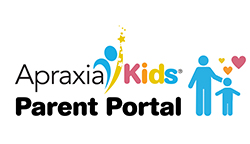What is Sensory Processing Disorder (SPD)?
Our brains are constantly taking in information from all of our senses and making decisions about it – does any action need to be taken? Can it be ignored? Does it need to be stored for later use? Sensory information includes the 5 main senses: smell, taste, vision, hearing, and touch. There are two additional senses that we generally are not aware of. The first is proprioception which is telling us where our body is in space so we can reach out and get something or avoid running into things. The second is vestibular which involves how our body moves, and its balance and coordination. SPD is when the brain is not able to appropriately process the information coming in and the child will either over or under react.
What are the signs of SPD for a young child?
When a child has difficulty processing information, they may have aversions to noise, light, touching different textures, or how clothes feel on their body. They may appear clumsier than other children or have difficulty with fine or gross motor skills like kicking a ball, holding a crayon or stacking blocks. They may exhibit behaviors such as an unusually high or low pain threshold, tantrums for no apparent reason, pulling away from touch or hugs, or seeking out sensory input by crashing into things. SPD can interfere with eating/feeding and potty training in young children. There are checklists that can help identify issues as being due to SPD.
Is there treatment to help?
Watch your child to figure out what might be causing the behaviors you see. Look for patterns in how the child is reacting to sensory input. SPD can interfere with the child’s ability to develop new skills, learn, and socialize. If a parent is concerned about how their child is reacting to sensory stimuli, an Occupational Therapist (OT) is trained to assess and treat the sensory issues. This area of treatment does not have a lot of evidenced based research support, however, many parents feel it helps the child to regulate how they process and respond to sensory stimuli.
What can be done to help at home?
Parents can work to isolate the types of stimuli that cause problems and try to minimize or replace them. If bright lights are an issue, turn down lights and make sure you have dark sunglasses available for the child to wear. If tags or seams in clothing are bothersome, try to buy clothes that are tagless and consider seamless socks. Or wearing socks with seams inside out can help. Reducing the volume of sounds or providing the child with a quiet place to escape to will help to not be overwhelmed. Wearing headphones in loud environments like a movie or mall can help when the child is sensitive to loud sounds. Find alternatives to messy actives like use a paintbrush instead of finger-painting or have a washcloth handy to wipe messy stuff off of their hands. Activities like brushing teeth or cutting hair can be difficult, so find out what the sensory issue is – the taste of the toothpaste? Shape or softness of the toothbrush? The sound of the scissors cutting hair near their ear? The feel of a different comb or brush? The smell in the barbershop or hair salon? Then work to make changes to lessen the child’s negative response. Sometimes the OT can help with methods to de-synthetize the child to some of the stimuli that are hindering participation in activities. Having things available to them to meet specific sensory needs such as a quiet place to escape to, a crunchy snack to chew on, fidget toys to hold and manipulate, a stress ball to squeeze, or the opportunity to run off excess energy will help reduce the impact of a sensory processing disorder.
Will the SPD issues get better?
Yes, as the child matures and learns to manage his impulses in reacting to stimuli, the behaviors can decrease. The child learns to compensate with socially appropriate ways to deal with sensory overload or learns how not to use his full force when hugging others or invade other’s personal space. As they get older, they may continue to have certain issues – we all have our own nails on the chalkboard sensations, but having alternative ways to decrease those incidences or to meet their sensory needs will be key.
Laura Moorer, M.A., CCC/SLP
January, 2022
